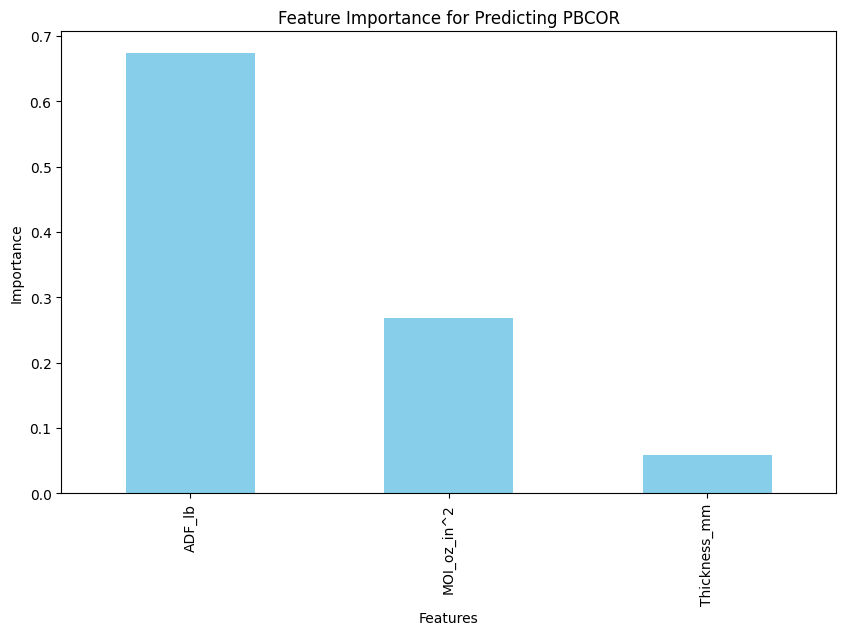
The Case for Predictive Modeling of PBCOR
|
|
|
Time to read 1 min
|
|
|
Time to read 1 min
We demonstrate that PBCOR (Paddle Ball Coefficient of Restitution) can be predicted with > 82 % accuracy from three static measurements: Average Deflection Force (ADF), Moment of Inertia (MOI), and Thickness. The inclusion of ADF is critical; omitting it collapses predictive power to below 13 %. A simple, transparent formulaic standard based on these variables is superior to the proposed 60 MPH high-speed cannon test, which is scientifically redundant, financially prohibitive, and stifles innovation.
A multiple-linear-regression model using ADF, MOI, and Thickness yields R² ≈ 82.5 %, indicating that these static properties explain the vast majority of variance in paddle performance. The deployed calculator is derived from the following equation:
PBCOR = 0.000649·MOI – 0.014622·Thickness – 0.002673·ADF + 0.346215Removing ADF drastically erodes model quality:
| Independent Variables | R² |
|---|---|
| MOI + Thickness | 6.2 % |
| MOI + Thickness + (MOI × Thickness) | 13.4 % |
This provides irrefutable evidence that ADF (stiffness) is the dominant predictive factor for PBCOR. Any regulatory framework excluding it is statistically unsound.
The proposed test measures PBCOR directly, yet we already predict that same quantity with ~82.5 % accuracy using three inexpensive static measurements. Mandating an expensive physical test when a validated, low-cost calculation suffices is inefficient and illogical.
Replace the dynamic test with a published equation (see above) that manufacturers can implement using widely available measurement equipment for ADF, MOI, and Thickness. Compliance is then a straightforward calculation rather than a capital-intensive test campaign.
Any future regulation must treat ADF as a required input. Ignoring stiffness ignores the single largest driver of paddle performance. Every manufacturer with a certified paddle knows their paddles deflection. Deflection, which PBCOR is very derivative of. If you know your deflection and swingweight, you know PBCOR. No ball cannon needed.
Data resolve the debate: the 60 MPH cannon test is an expensive redundancy. A calculative standard grounded in ADF, MOI, and Thickness delivers > 82 % accuracy at a fraction of the cost.
The USAP should abandon the proposed high-speed protocol and adopt the data-driven, formulaic approach outlined above. This respects competitive integrity, lowers barriers to innovation, and ensures the continued healthy growth of pickleball. What's more it allows data from certifications to be used as potential data points in the prediction of other more complex properties.